The best growing substrate for peony seedlings
Last year we tried to find out which was the best germinating substrate for peony seeds. This year we’ve tried to find out in which substrate those germinated seedlings would grow best. We usually grow our seedlings in a potting mix consisting mostly of peat and with some coarse river sand added. Peat holds water very well and is by far the most used substrate here in Europe. It is under pressure as a substrate due to environmental concerns, so the search is on for a good replacement, but that is still a distant goal. We had the feeling that the reason some seedlings died in previous years was mostly due to excess moisture in the substrate, thus we aimed for other elements that would drain excess moisture well. We thought perlite would be a good candidate for this as it is known to improve aeration and drainage. Some other substances were also tried for the same reason: clay granules, lava and pebbles. Vermiculite was not included here as that one is known to keep water in the substrate instead of draining it, the opposite of what is needed for a perennial that detests too much moisture.
So we set up another experiment in the following way.
First we took some rooted seedlings from PVBM005 open pollinated, all of which had roots longer than 5 cm. We did a first test November 7th (series A) and planted them in horticultural crates, 10 to each crate, after which those crates were placed in cold storage until halfway February when they were placed in our heated greenhouse. We let them grow for an entire season and about a week ago, Nov 5th, we took them out of the crates, had a good look at them and weighed them to get an average weight per seedling after one year. The reasoning was then that the highest average weight would be the best substrate. If there would be large differences between the substrates in surviving seedlings, that might also make clear which ones would be best to grow ‘difficult’ seedlings.
As it happened, next to the PVBM005, we also had a lot of rooted seedlings from a protected cross. (Big Jhonny x open) 001 double pink x PVBM003 gave us some 70 seedlings with long roots by Nov 15th. We split them in half, each of them growing in a different substrate and this is series B.
One month later we inspected the seeds of PVBM005 in the ziplock bags again and noted that another large batch had also sent out their first root, so we did yet another series C this time with different substrates, this time focusing on changing proportions of perlite in the mix. The results are outlined in the table below.
| Heat Feb 15th | Substrate composition in % | Results Nov 5, one year later | ||||||
| peat mix | perlite 3-5 mm | clay granules 5-15 mm | lava (tuff) 3-8 mm | pebbles 5-8 mm | survival rate | average weight | remarks | |
Series A (cold Nov 7th) PVBM005 x open | ||||||||
| A1 | 75 | 0 | 25 | 0 | 0 | 8/10 | 8.25 gr | Lots of fine feeder roots, a few diseased. |
| A2 | 100 | 0 | 0 | 0 | 0 | 10/10 | 7.20 gr | |
| A3 | 75 | 0 | 0 | 25 | 0 | 10/10 | 6.40 gr | Lots of fine feeder roots, shorter but wide |
| A4 | 75 | 0 | 0 | 0 | 25 | 10/10 | 5.60 gr | Smaller roots, less feeder roots |
| A5 | 50 | 42 | 0 | 0 | 8 | 8/10 | 5.25 gr | Lots of fine feeder roots, long and thin |
Series B (cold Nov 15th) (Big Jhonny x open) Double Pink 001 x PVBM003 | ||||||||
| B1 | 43 | 36 | 7 | 7 | 7 | 30/35 | 3.00 gr | healthy |
| B2 | 100 | 0 | 0 | 0 | 0 | 31/35 | 3.00 gr | healthy |
Series C (cold Dec 10th) PVBM005 x open | ||||||||
| C1 | 100 | 0 | 0 | 0 | 0 | 18/20 | 6.70 gr | |
| C2 | 75 | 25 | 0 | 0 | 0 | 17/20 | 5.76 gr | |
| C3 | 80 | 20 | 0 | 0 | 0 | 15/20 | 5.60 gr | |
| C4 | 67 | 33 | 0 | 0 | 0 | 17/20 | 5.50 gr | |
| C5 | 88 | 12 | 0 | 0 | 0 | 15/20 | 5.07 gr | Crate smaller than others, few substrate |
What can we see in the table? Series A shows that a pure peat substrate isn’t too bad at all. At an average weight of 7.2 grammes per seedling after one year of growth, it is one of the best results. The other combinations did less good and only the addition of some 25 % clay granules did result in heavier seedlings of some 8.25 gr. The perlite had rather adverse effects as it resulted in the seedlings with the lowest average weight. The number of surviving seedlings didn’t really differ much between the different treatments.
- A1
- A2
- A3
- A4
- A5
Series B didn’t show any difference at all. But the seedlings here were all much smaller after one growing season, making it also much more difficult to find such differences. B1 was the composition I had used for difficult species outside as well. From the preliminary results I have from that, it does seem to drain water well and species that hitherto died easily seem to have grown better. But that is from anecdotal evidence only, mostly single plants of a species, so no large numbers.
Series C varied only in the use of perlite. Given that series A already showed perlite to be a poor substrate component for peony seedlings, it is then unsurprising that the 100% peat substrate showed the best results. The average weight of treatment C1 is slightly less than that of A1, but series C went into cold at a later date and as a result they sprouted less rapidly in Spring which means it is not a fully fair comparison between those two series. However within a series the comparisons are fair. The variations are always listed from the highest average weight to the lowest and are somewhat inconclusive for the amount of perlite with the lowest amount of perlite giving the lowest weight. However that crate had substantially less substrate (a mistake by me) and thus dried out much faster than the others in between irrigation.
All in all, I would conclude that peat itself is a good substrate for peony seedlings. Addition of clay granules did have a beneficial effect on average weight here. Perlite decreased the average weight on the other hand and this was totally unexpected. As to survival rates of ‘difficult’ seeds, nothing much can be concluded as the differences are only small. To test that better I suppose such difficult seeds should have to be tested.
For the near future we’ll thus stick with peat as this is the most easily available medium and we’ll add some clay granules for the rooted seeds which we expect to be more difficult. We’d like to try larger lava stones as well in the future (a few days ago we found lava stones graded 8-15 mm, which is the size of the clay granules).
We’re always open to any suggestions readers may have or your own experiences growing seedlings, the comments section is open 🙂

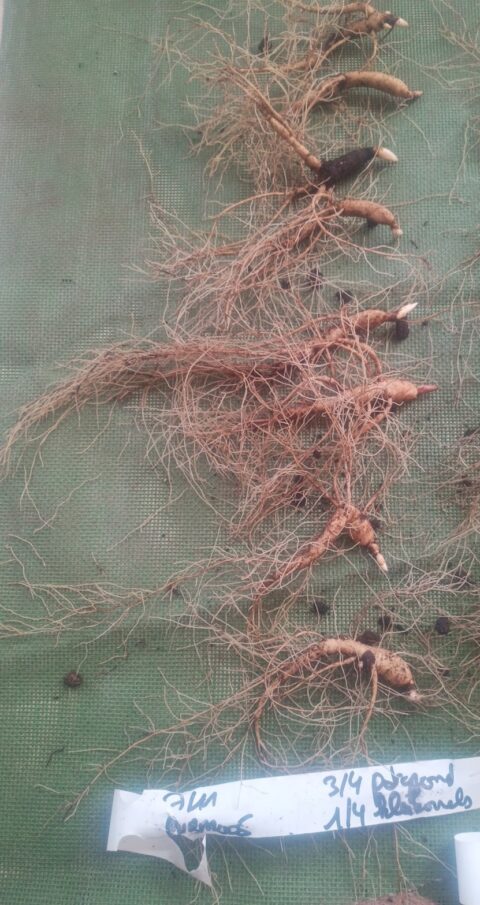
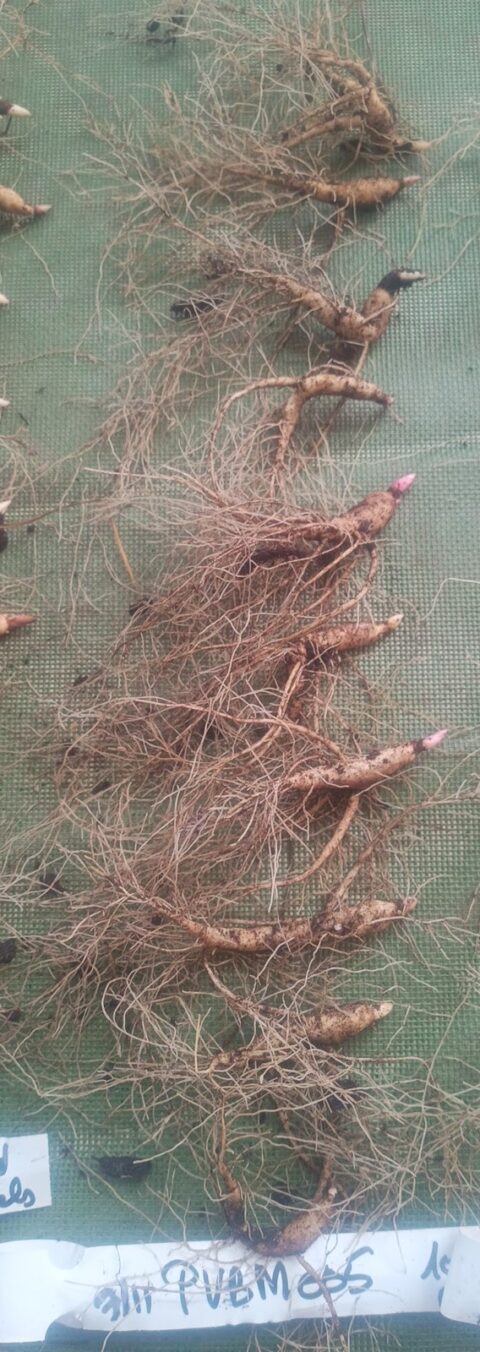


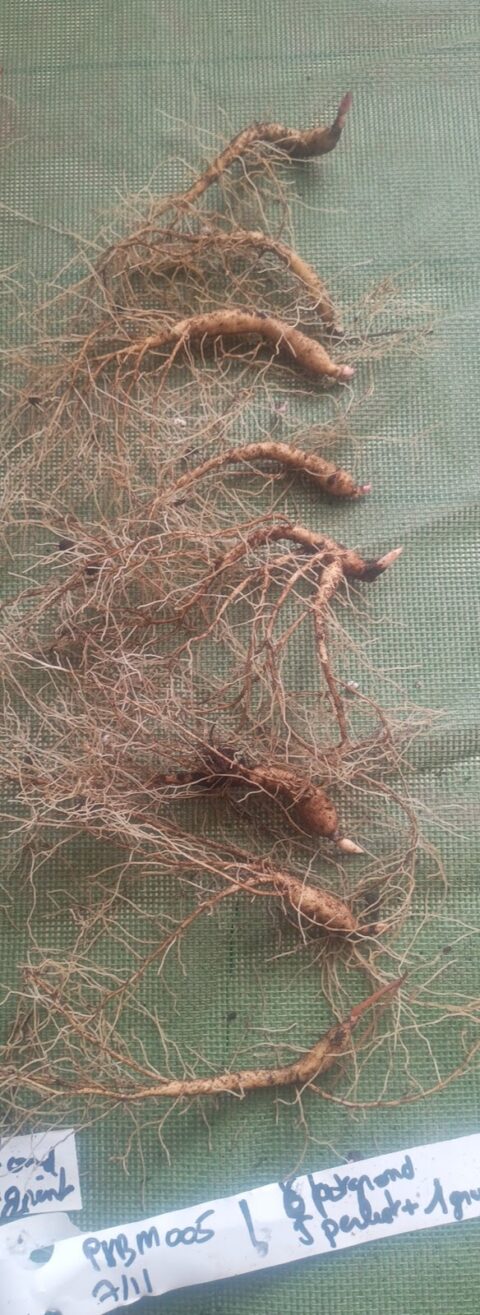

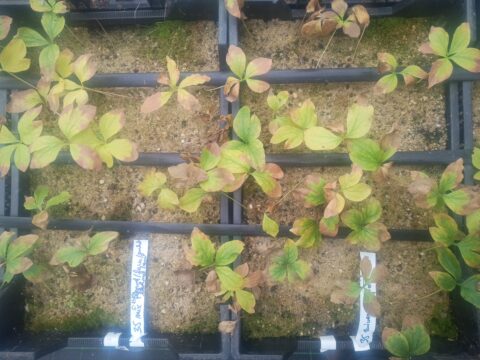







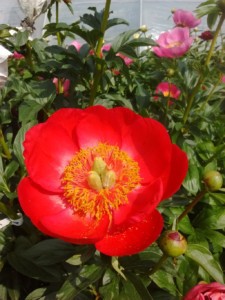


I must say that I grow all my seedlings in potting soil, 24 seeds to a #3 pot. I keep them in pots for two seasons, before planting them out in the fields. My working space makes it convenient for me to do it this way.
I’m not sure that my results show anything different than you have discovered. Other than, much like yourself, I’m not a big fan of perlite. It seems to me that perlite is abrasive, and that tender roots don’t like that, particularly when used as an initial medium to start bagged seeds.
I’m glad to see that you got relatively good results with all of your medums though. For myself, I like the idea of "live" soils, which is one reason why I use potting soil. It would seem that one might get more soil organisms using it ? If one thinks that that might make a difference.
Also I think it’s reasonable to look into the clay grains you mentioned. My sense has always been that seedlings get a certain amount of shock, when transferred from the open medium of their seedling pots, into the much more closed clay soils of the fields. That first year in the fields seems to be a bit of a struggle for them, foliage increase-wise, when compared to their increase rate in the pots, and their subsequent years of growth in the fields.